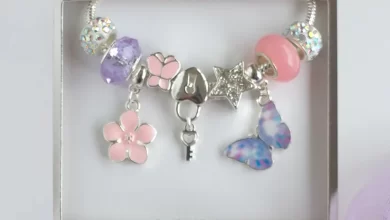The Dutch clog, or “klompen,” is much more than a traditional wooden shoe; it’s a symbol of Dutch heritage and craftsmanship. These iconic designs have been worn for centuries, evolving from practical workwear into fashionable and artistic statements. In this article, we delve into ten inspiring stories behind some of the most iconic wooden clog, showcasing how these unique footwear pieces have made their mark on history, culture, and design.
The Origins of the Dutch Clog: A Historical Perspective
The Dutch clog has deep roots in Dutch history, with its origins tracing back to the Middle Ages. Initially crafted from wood to protect the feet of farmers and laborers, the clog was designed to be durable and practical. These early clogs were often handmade by local artisans, featuring simple, functional designs. Over time, the wooden clog evolved to include intricate carvings and decorations, reflecting the artistry of the region and the wearer’s social status.
The Classic Wooden Dutch Clog: Timeless Craftsmanship
One of the most recognizable wooden clog is the classic wooden version, known for its sturdy construction and timeless design. Crafted from durable woods like alder or poplar, these clogs are often adorned with traditional hand-carved motifs. The craftsmanship involved in creating these clogs reflects a deep respect for tradition and quality. Today, they remain a popular choice for collectors and enthusiasts who appreciate their historical significance and unique beauty.
The Floral Dutch Clog: A Burst of Color and Creativity
In the 20th century, the wooden clog saw a burst of creativity with the introduction of colorful, floral designs. Artisans began to incorporate vibrant paint and intricate patterns, turning these practical shoes into fashionable accessories. The floral wooden clog quickly became a symbol of Dutch artistic expression, with designs ranging from simple floral prints to elaborate, hand-painted scenes. These clogs are a testament to the creativity and innovation of Dutch designers.
Modern Innovations in Dutch Clog Design: A Fusion of Tradition and Innovation
The modern wooden clog represents a fusion of traditional craftsmanship with contemporary design elements. Designers have experimented with new materials, including leather, rubber, and even synthetic fabrics, to create clogs that are both stylish and functional. The modern clog often features updated silhouettes and innovative details while maintaining the classic characteristics that define its heritage. This blend of old and new has made the Dutch clog a versatile and enduring fashion statement.
Designer wooden clogs: High Fashion Meets Folk Art
In recent years, high fashion designers have embraced the Dutch clog, integrating it into their collections and elevating its status to that of a luxury item. Designer wooden clogs often feature premium materials, unique embellishments, and avant-garde designs. By combining traditional elements with cutting-edge fashion trends, these designer clogs have gained international recognition and appeal, bridging the gap between folk art and high fashion.
Customized Clogs: Personalizing Tradition
Customized wooden clogs offer a personal touch, allowing individuals to create unique designs that reflect their style and personality. From custom carvings to personalized paint jobs, individual preferences can be met by tailoring these clogs.. The rise of personalized wooden clogs highlights the enduring appeal of this footwear and the continued relevance of traditional craftsmanship in a modern context. Custom clogs make for meaningful gifts and cherished keepsakes.
The Dutch Clog in Popular Culture
The Dutch clog has made its way into popular culture, appearing in various forms of media and entertainment. From movies and television shows to art installations and advertising campaigns, these wooden shoes have become a recognizable symbol of Dutch heritage. Their presence in popular culture underscores the global fascination with Dutch design and the enduring legacy of the wooden clog as an iconic cultural artifact.
Eco-Friendly Clogs: Sustainability in Design
In response to growing environmental concerns, many modern clog makers have adopted eco-friendly practices. Sustainable materials, such as reclaimed wood and organic dyes, are used to create clogs that minimize their environmental impact. The eco-friendly wooden clog represents a commitment to preserving traditional craftsmanship while embracing sustainable design principles. This approach reflects a growing awareness of the need for responsible production practices in the fashion industry.
Clogs as Tourist Souvenirs: A Symbol of Dutch Culture
For many tourists, the Dutch clog serves as a memorable souvenir of their visit to the Netherlands. Often available in various sizes and designs, these clogs are popular keepsakes that capture the essence of Dutch culture. Tourist-oriented wooden clog may feature decorative elements, such as traditional Dutch scenes or iconic landmarks, making them a tangible reminder of the country’s rich heritage and craftsmanship.
The Future of the wooden clog: Innovations and Trends
As the wooden clog continues to evolve, designers are exploring new ways to innovate while preserving its traditional roots. Future trends may include advancements in materials, design techniques, and manufacturing processes, reflecting the dynamic nature of fashion and design. The future of the wooden clog holds exciting possibilities, as it adapts to contemporary tastes while remaining a symbol of Dutch heritage and craftsmanship.
Conclusion
The Dutch clog is more than just a piece of footwear; it is a symbol of tradition, craftsmanship, and innovation. From its humble beginnings as a practical work shoe to its current status as a fashion statement and cultural icon, the wooden clog has left an indelible mark on history and design. Each of the ten stories highlighted in this article showcases a unique aspect of the wooden clog journey, illustrating its enduring appeal and the creativity that continues to shape its legacy.
FAQs
Q1. What is the history behind the Dutch clog?
The wooden clog, or “klompen,” has been a part of Dutch culture since the Middle Ages. Originally made from wood for practical purposes, it has evolved into a symbol of Dutch heritage with intricate designs and craftsmanship.
Q2. How are classic wooden clogs made?
Classic wooden clogs are made from durable woods like alder or poplar. Skilled artisans carve and shape the wood by hand, often adding decorative carvings that reflect local artistry and tradition.
Q3. What are some modern variations of wooden clogs?
Modern variations of wooden clogs include those made from materials such as leather, rubber, and synthetic fabrics. These contemporary designs often feature updated silhouettes and innovative details, blending traditional elements with modern fashion trends.
Q4. Can clogs be customized?
Yes, clogs can be customized to reflect personal style. Options for customization include unique carvings, paint jobs, and other design elements. Many artisans and companies offer services to personalize clogs according to individual preferences.
Q5. Are there eco-friendly options for clogs?
Yes, many manufacturers are now producing eco-friendly clogs using sustainable materials and responsible production methods. These options aim to reduce environmental impact while maintaining the traditional craftsmanship of the footwear.
Also read: Gourmetten Magic: 10 Unforgettable Dishes You Need to Try Tonight





